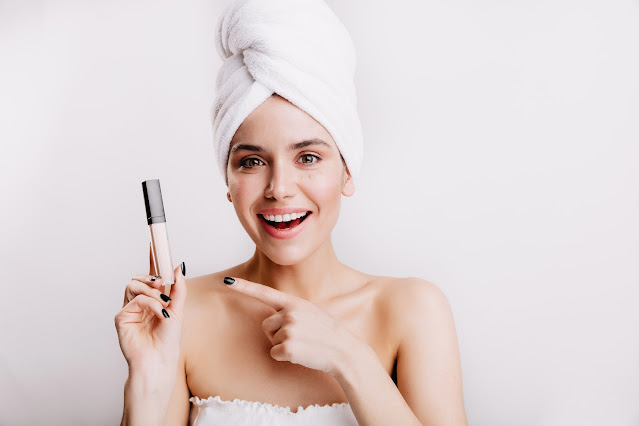Featured
- Get link
- X
- Other Apps
Keratin Treatment vs Protein Treatment: Benefits and Harms
Hair care treatments are essential for keeping hair healthy and shiny. Two popular treatments are keratin treatment and protein treatment. Both promise to strengthen and nourish hair, but they differ in their approach and results. In this blog, we'll take a closer look at the benefits and harms of keratin treatment and protein treatment.
Keratin Treatment:
Keratin treatment is a popular hair treatment that promises to make hair smoother, straighter, and more manageable. The treatment involves the application of a keratin solution to the hair, followed by heat styling to seal the solution into the hair shaft. Here are some benefits and harms of keratin treatment:
Benefits:
- Smoother and straighter hair: Keratin treatment makes hair smoother and straighter, which can reduce frizz and make it easier to style. This is especially helpful for people with curly or frizzy hair who struggle to keep their hair under control.
- Long-lasting results: Keratin treatment can last up to six months, which means you won't have to worry about getting a touch-up every few weeks. This is convenient for people with busy schedules who don't have the time or energy to maintain their hair frequently.
- Improved hair health: The keratin solution used in the treatment contains amino acids that can strengthen hair and reduce breakage. This can lead to healthier-looking hair that is less prone to damage.
Harms:
- Formaldehyde exposure: Some keratin treatments contain formaldehyde, a toxic chemical that can cause irritation, allergic reactions, and respiratory problems. Formaldehyde is a known carcinogen and can have long-term health effects. It's important to choose a keratin treatment that is formaldehyde-free or has low levels of formaldehyde to minimize your exposure.
- Expensive: Keratin treatment is a relatively expensive hair treatment, which means it may not be an affordable option for everyone. The cost can vary depending on the salon and location, but it's typically higher than other types of hair treatments.
- Limited styling options: After a keratin treatment, you may not be able to style your hair as you normally would. For example, you may not be able to put your hair up in a ponytail or braid for a few days after the treatment. This can be inconvenient for people who like to change their hairstyle frequently.
- Time-consuming: Keratin treatment can take several hours to complete, depending on the length and thickness of your hair. This can be a problem for people with busy schedules who can't afford to spend that much time in the salon.
Protein Treatment:
Protein treatment is a hair treatment that aims to strengthen and nourish hair by infusing it with protein. The treatment involves the application of a protein-rich product to the hair, followed by heat styling to help the product penetrate the hair shaft. Here are some benefits and harms of protein treatment:
Benefits:
- Improved hair health: Protein treatment can help strengthen hair and reduce breakage, which can lead to healthier-looking hair. This is especially helpful for people with damaged or brittle hair who want to restore their hair's health.
- Affordable: Protein treatment is a relatively affordable hair treatment, which makes it accessible to most people. The cost can vary depending on the product and salon, but it's typically lower than keratin treatment.
- Customizable: Protein treatments can be customized to meet the specific needs of different hair types and textures. This means that you can choose a product that is tailored to your hair's unique needs, whether it's for hydration, repair, or volume.
Harms:
- Overuse: Using protein treatment too frequently can lead to hair breakage and damage. It's important to follow the instructions on the product label and not exceed the recommended frequency of use.
- Limited styling options: Protein treatment can make hair stiff and less flexible, which can limit your styling options. This is especially true if you use a protein treatment that contains a lot of protein, which can make hair feel brittle and hard.
- Temporary results: Protein treatment is a temporary solution that can last for a few weeks to a few months, depending on the product and how often you use it. This means that you may have to repeat the treatment frequently to maintain its effects.
Which Treatment is Right for You?
Deciding between keratin treatment and protein treatment can be a difficult choice, as both have their benefits and harms. Here are some factors to consider when making your decision:
- Hair type and texture: Keratin treatment is best for people with curly or frizzy hair who want to make their hair smoother and more manageable. Protein treatment is best for people with damaged or brittle hair who want to strengthen their hair and reduce breakage.
- Budget: Keratin treatment is typically more expensive than protein treatment, which may be a deciding factor for some people.
- Time commitment: Keratin treatment can take several hours to complete, while protein treatment is typically quicker. If you have a busy schedule, protein treatment may be a better option.
- Styling preferences: Keratin treatment can limit your styling options, while protein treatment can make hair stiff and less flexible. Consider your styling preferences when deciding between the two treatments.
In conclusion, both keratin treatment and protein treatment have their benefits and harms. Keratin treatment can make hair smoother and straighter, but it can also expose you to harmful chemicals and limit your styling options. Protein treatment can improve hair health and is affordable, but overuse can lead to hair breakage. Ultimately, it's up to you to decide which treatment is right for you and your hair type.
- Get link
- X
- Other Apps
Popular Posts

5 Best Concealer Dupes: Affordable Alternatives to High-End Brands
- Get link
- X
- Other Apps

5 Best and Affordable Makeup Setting Powders for Dry Skin
- Get link
- X
- Other Apps

Comments
Post a Comment